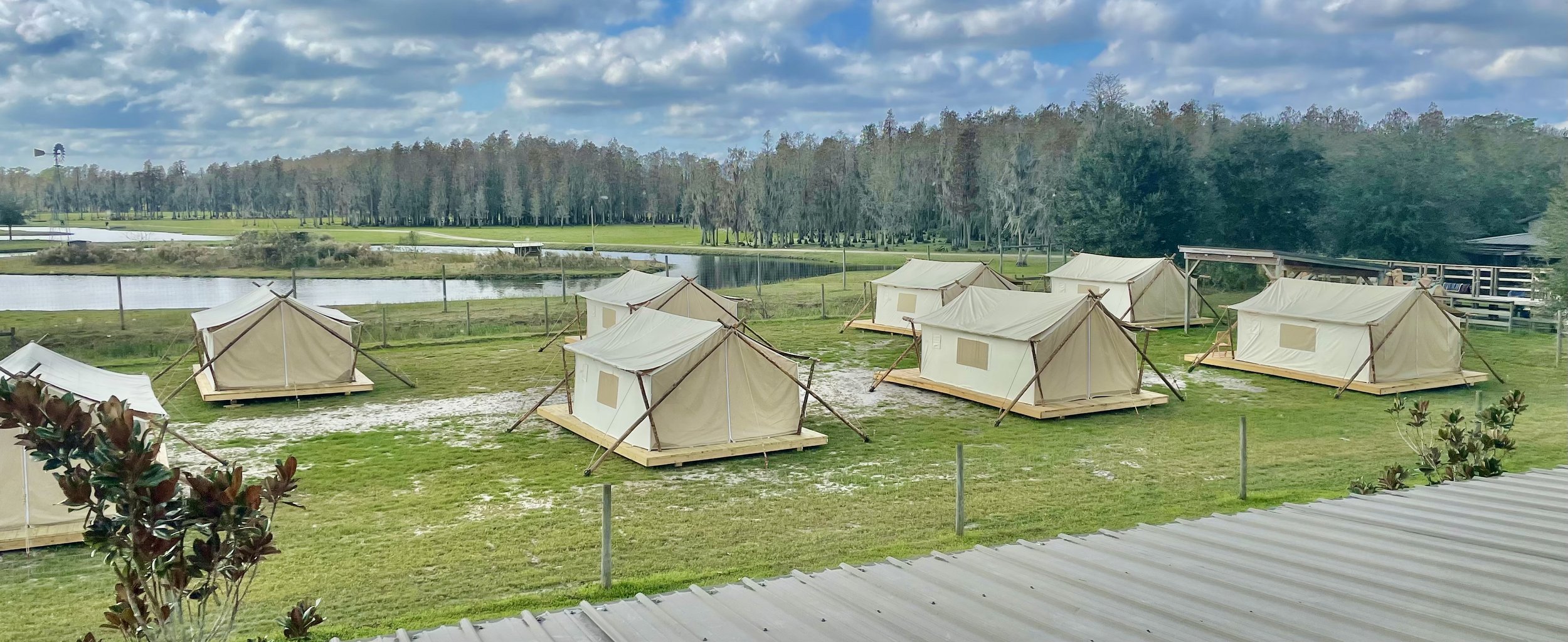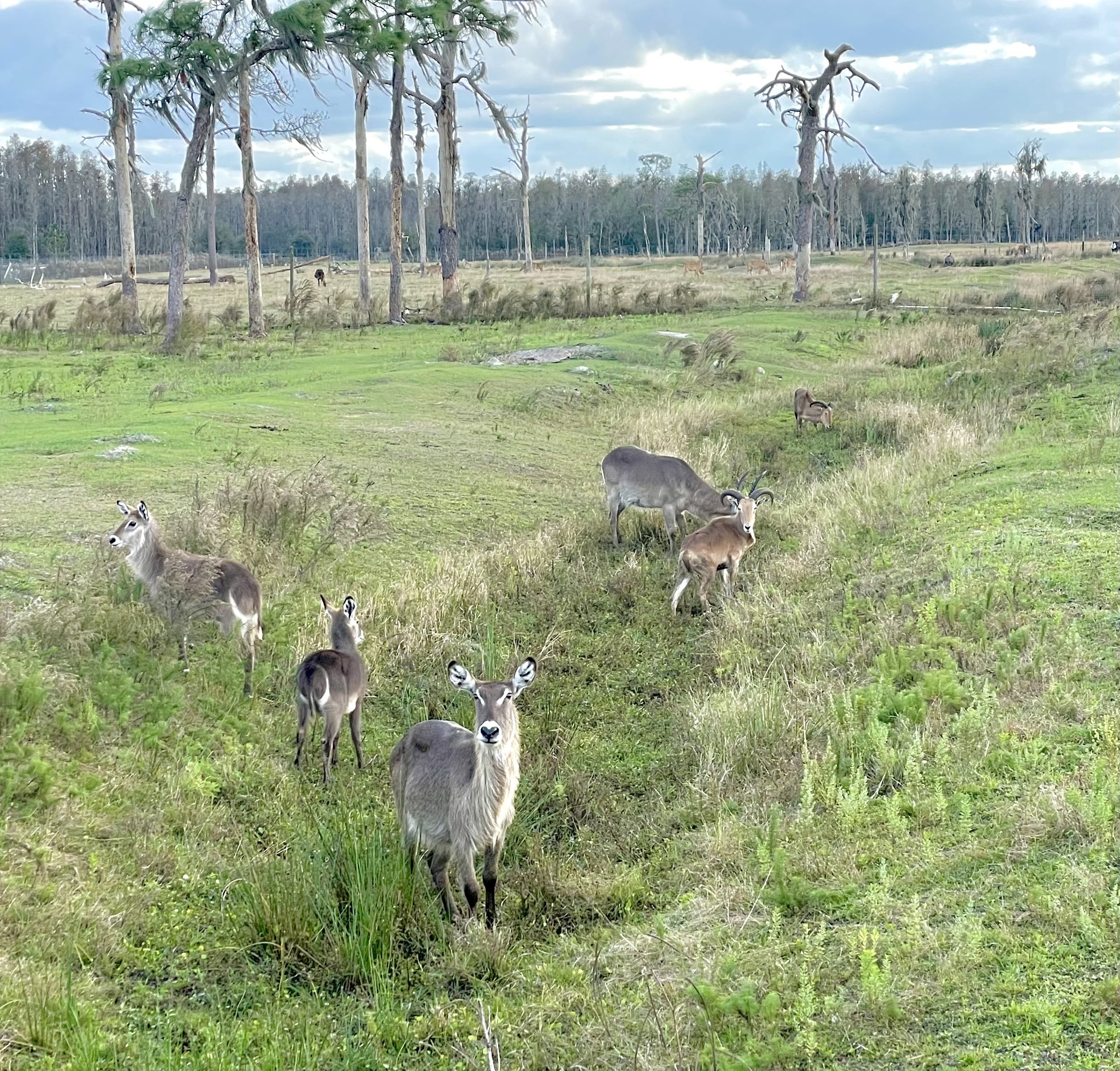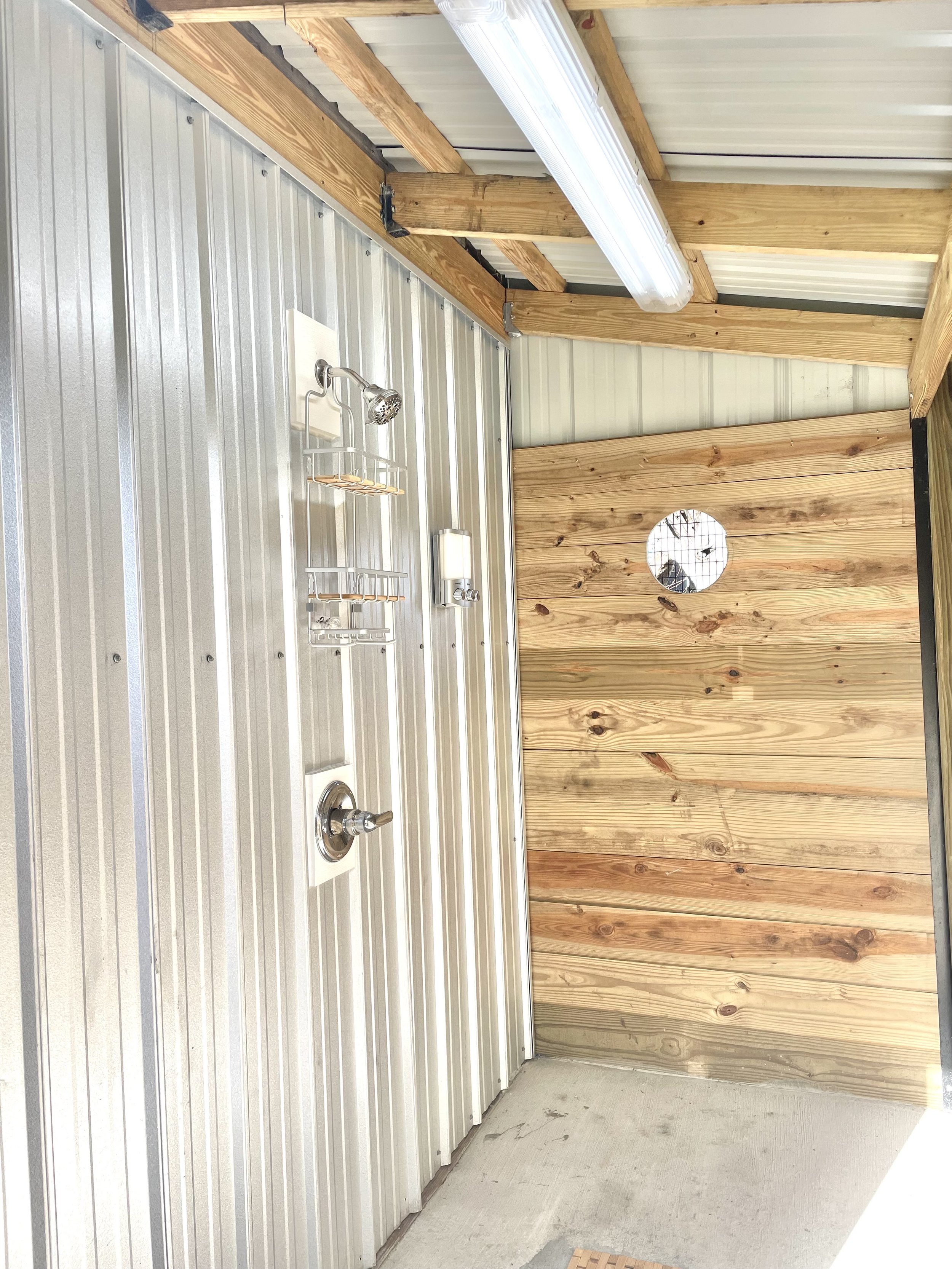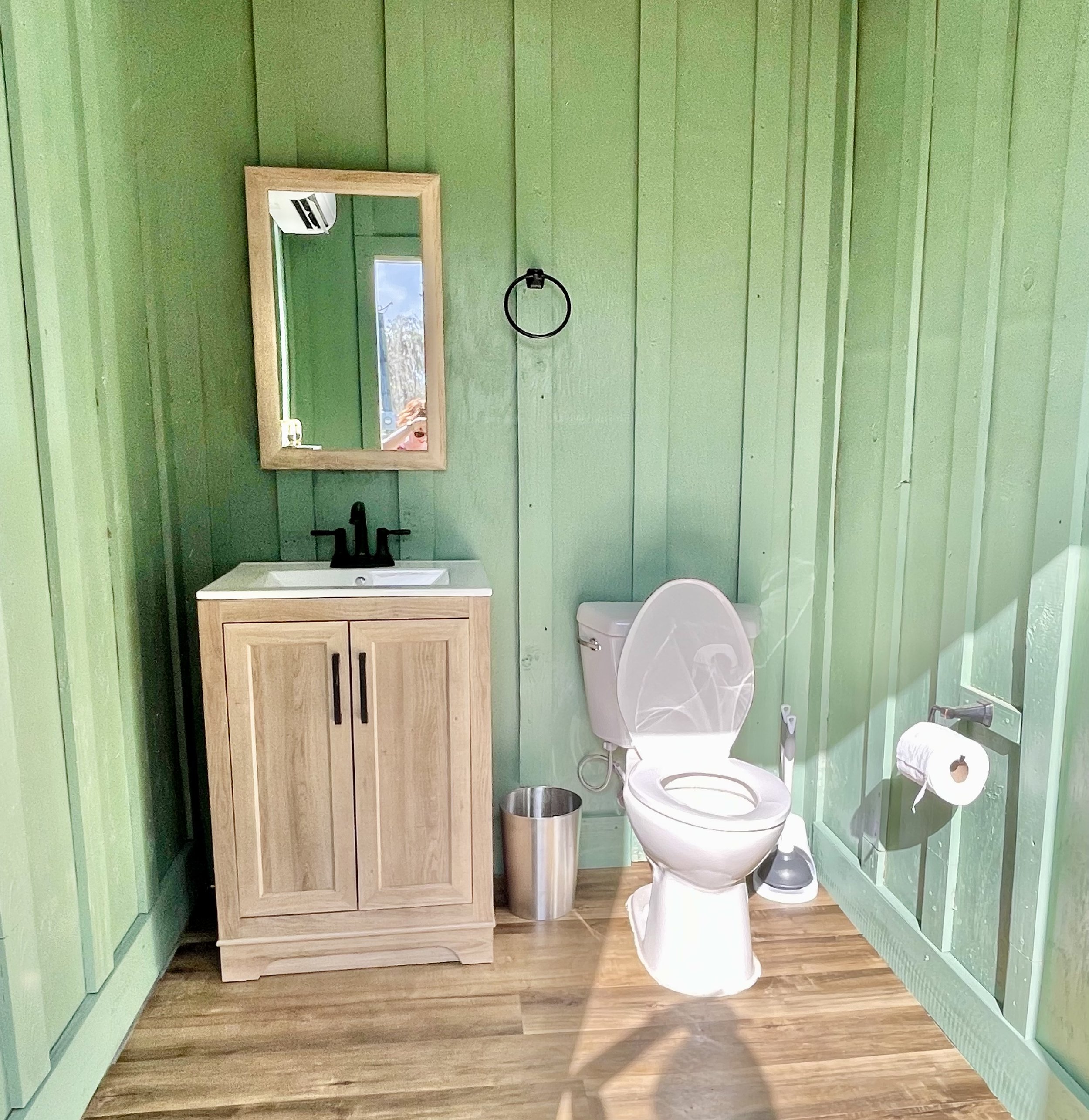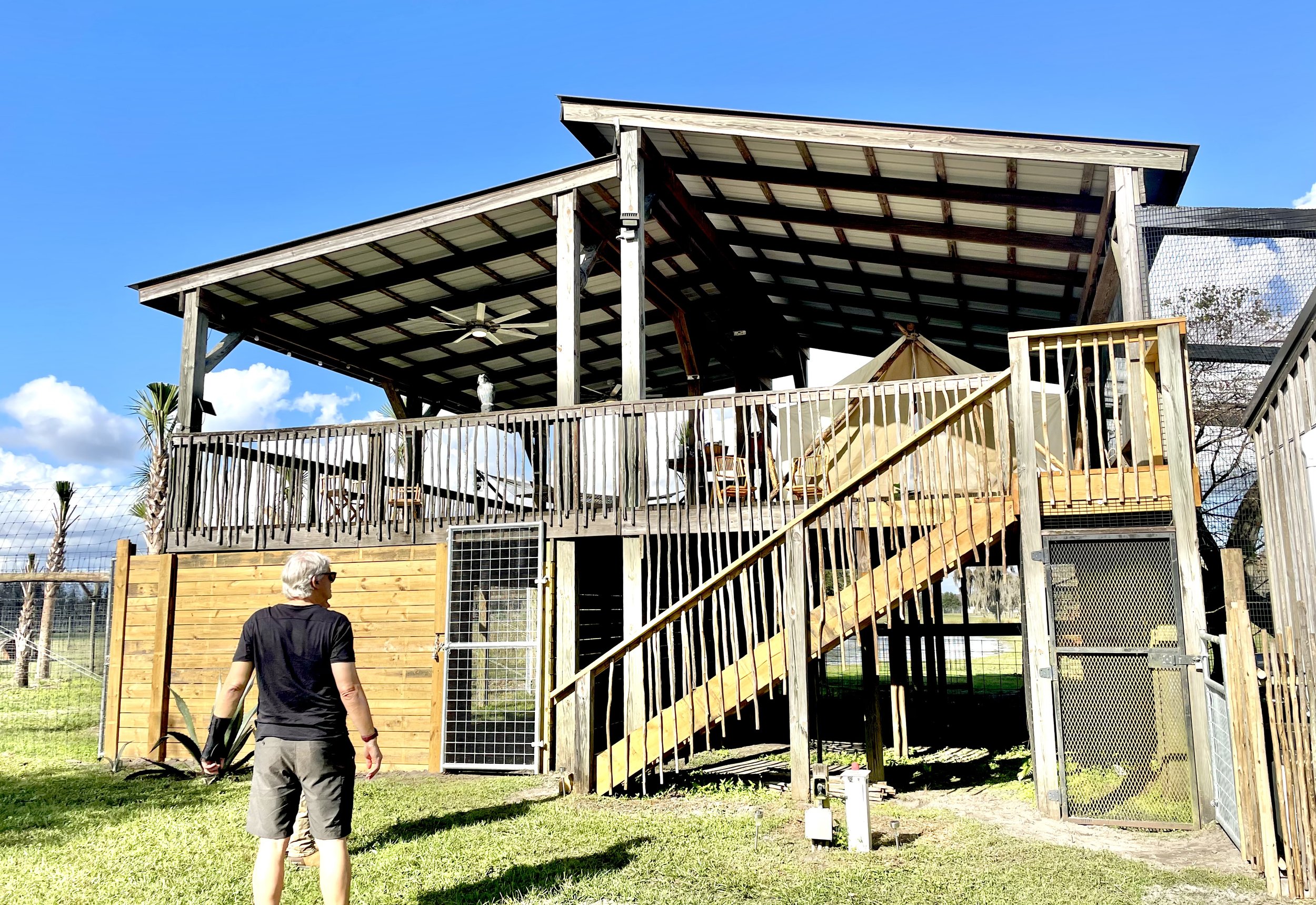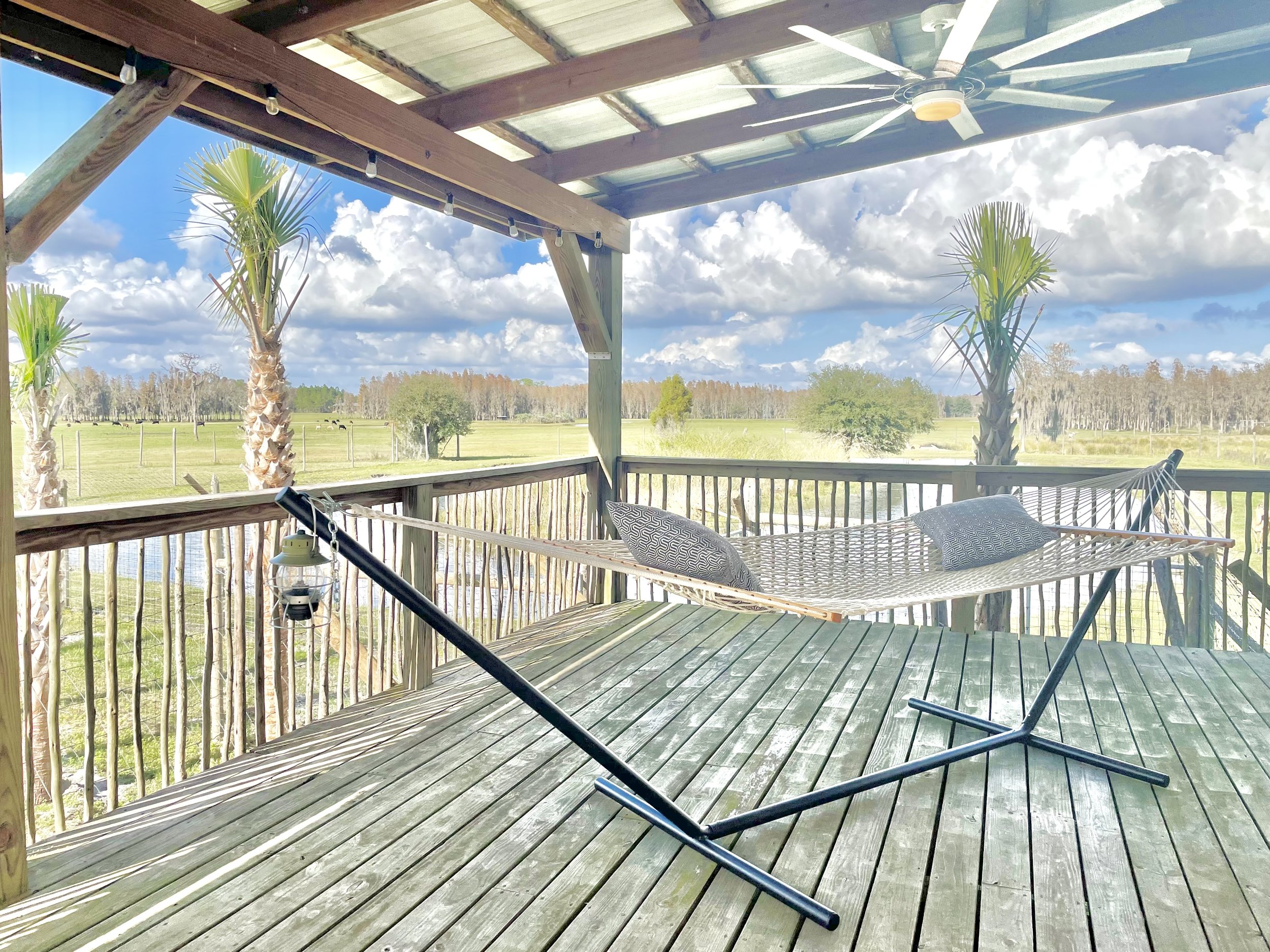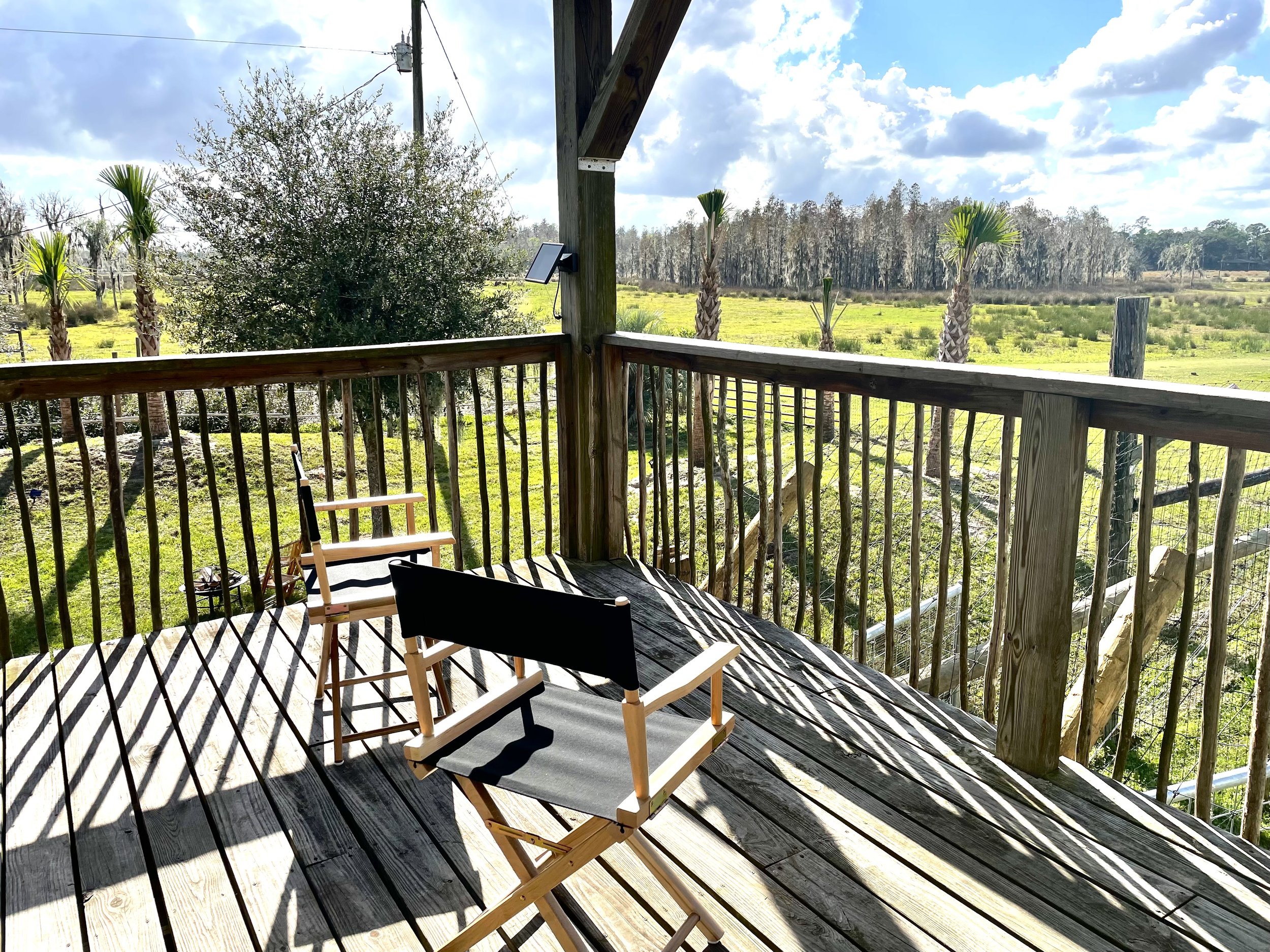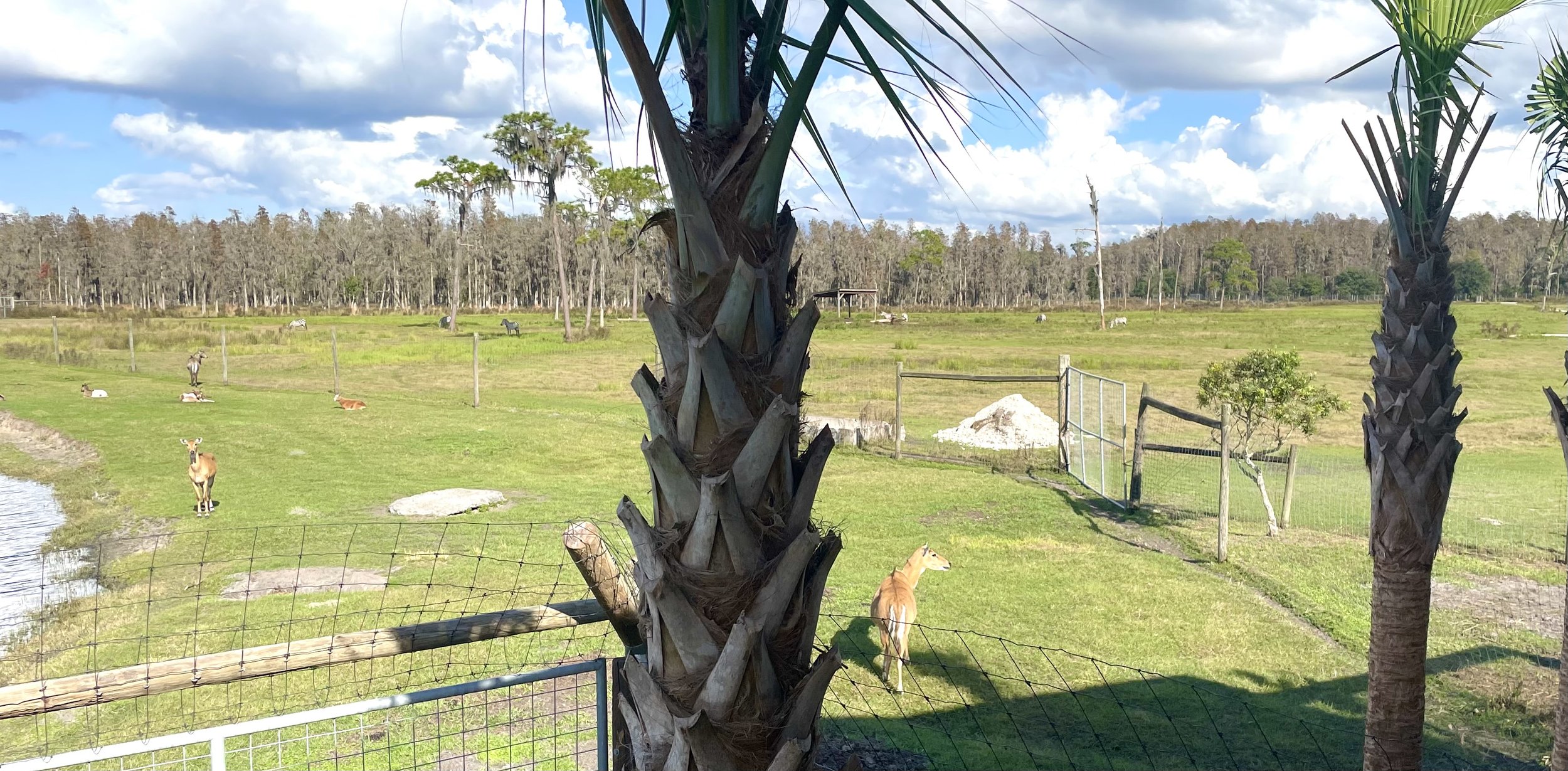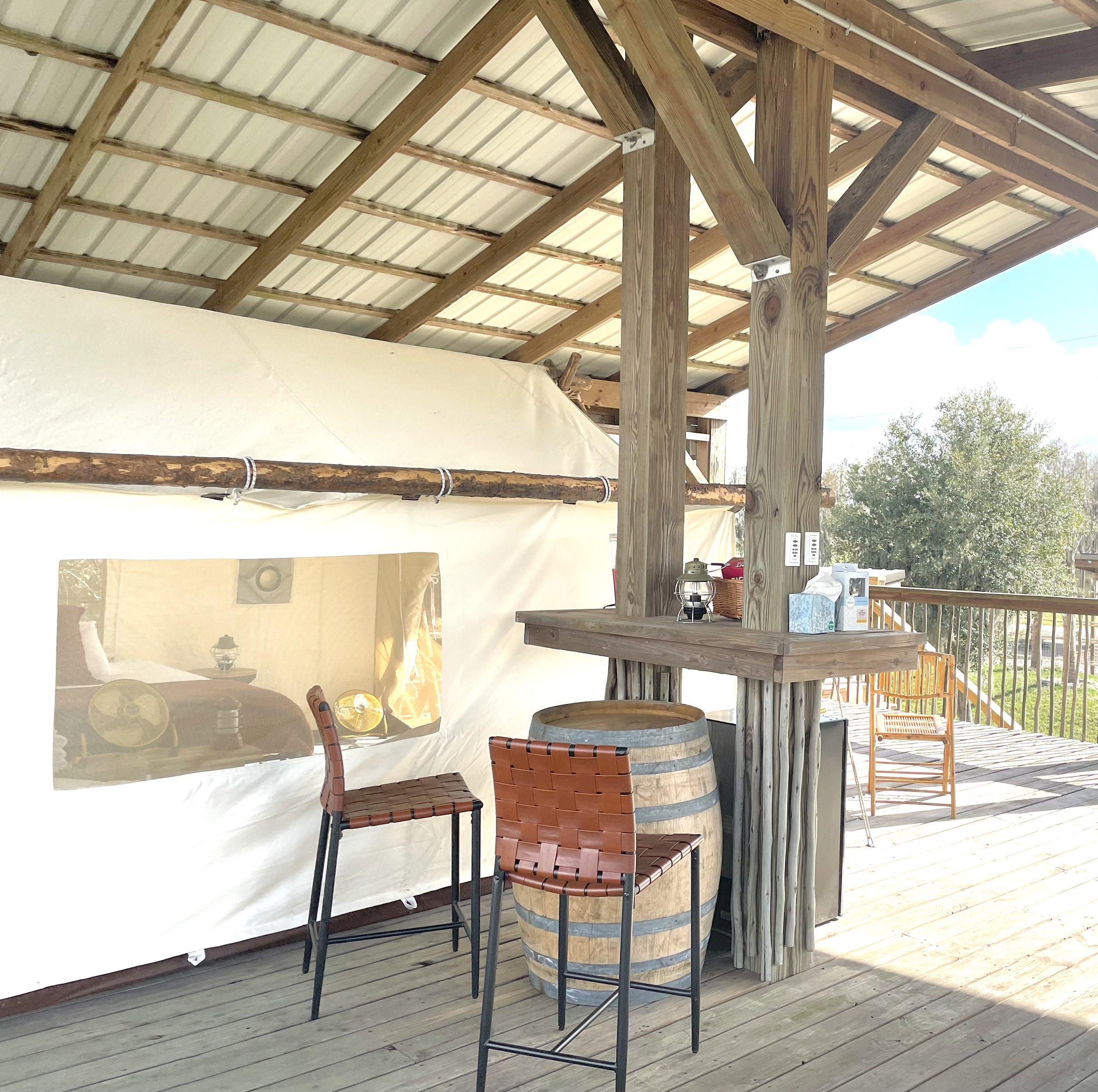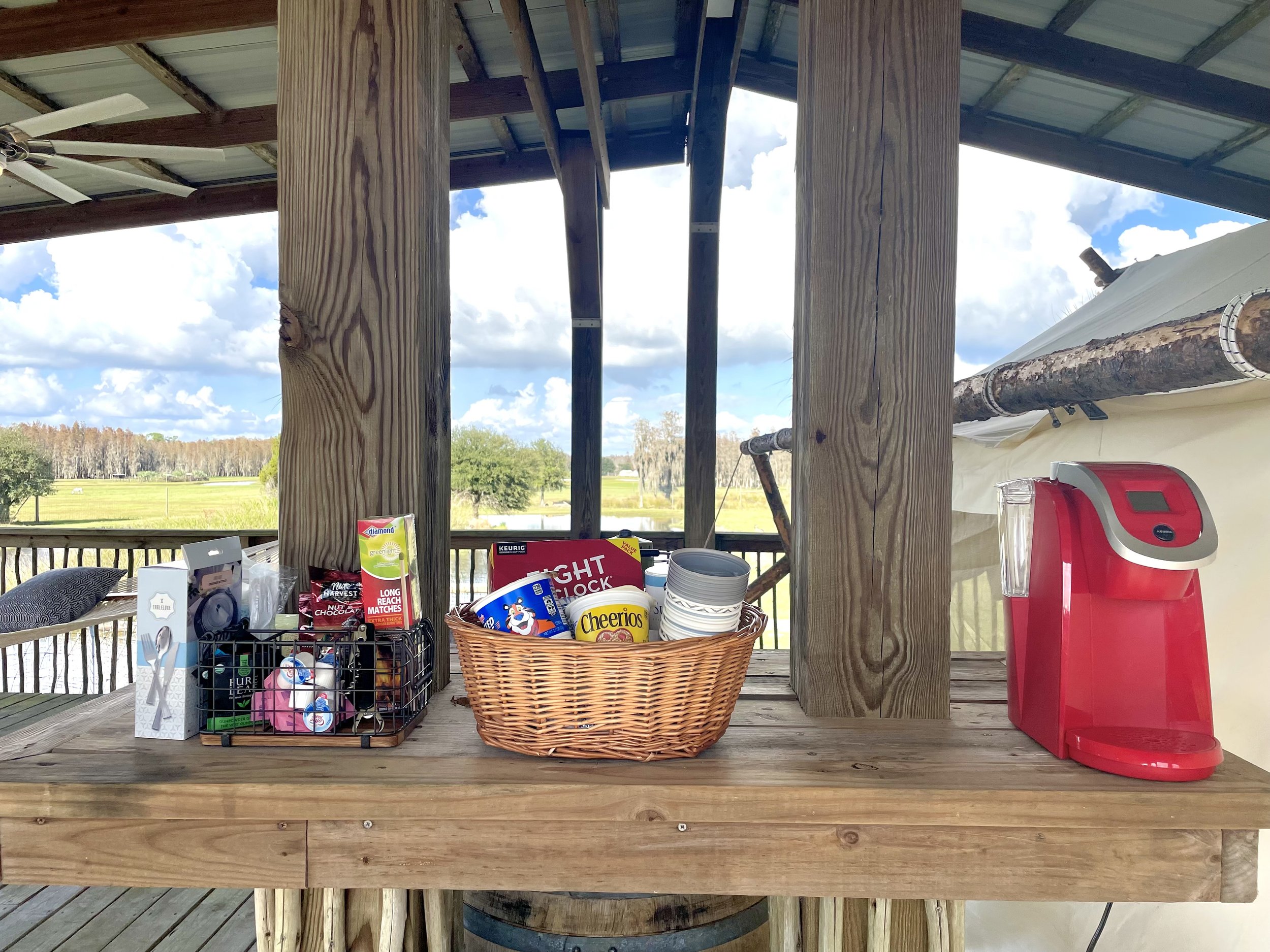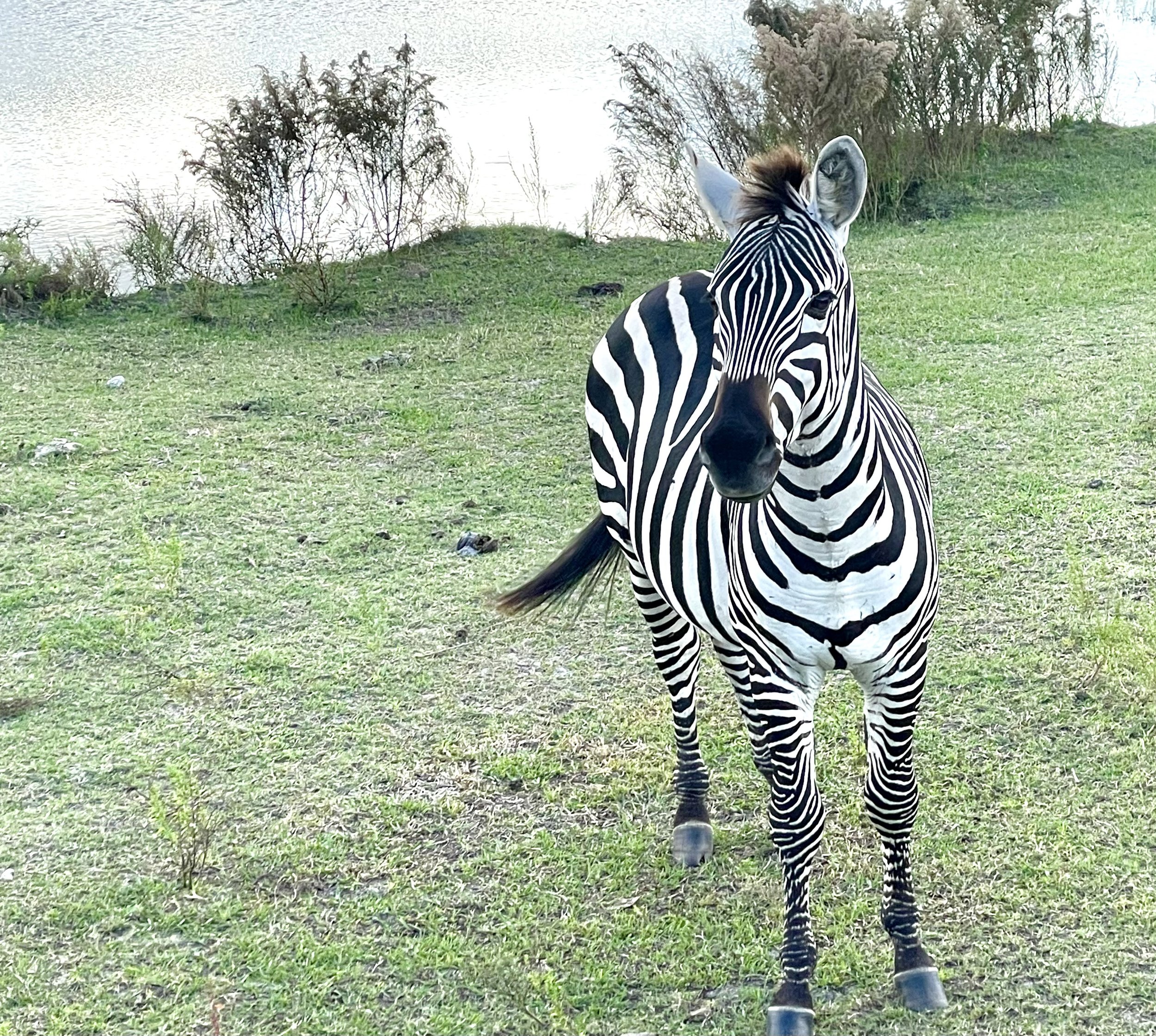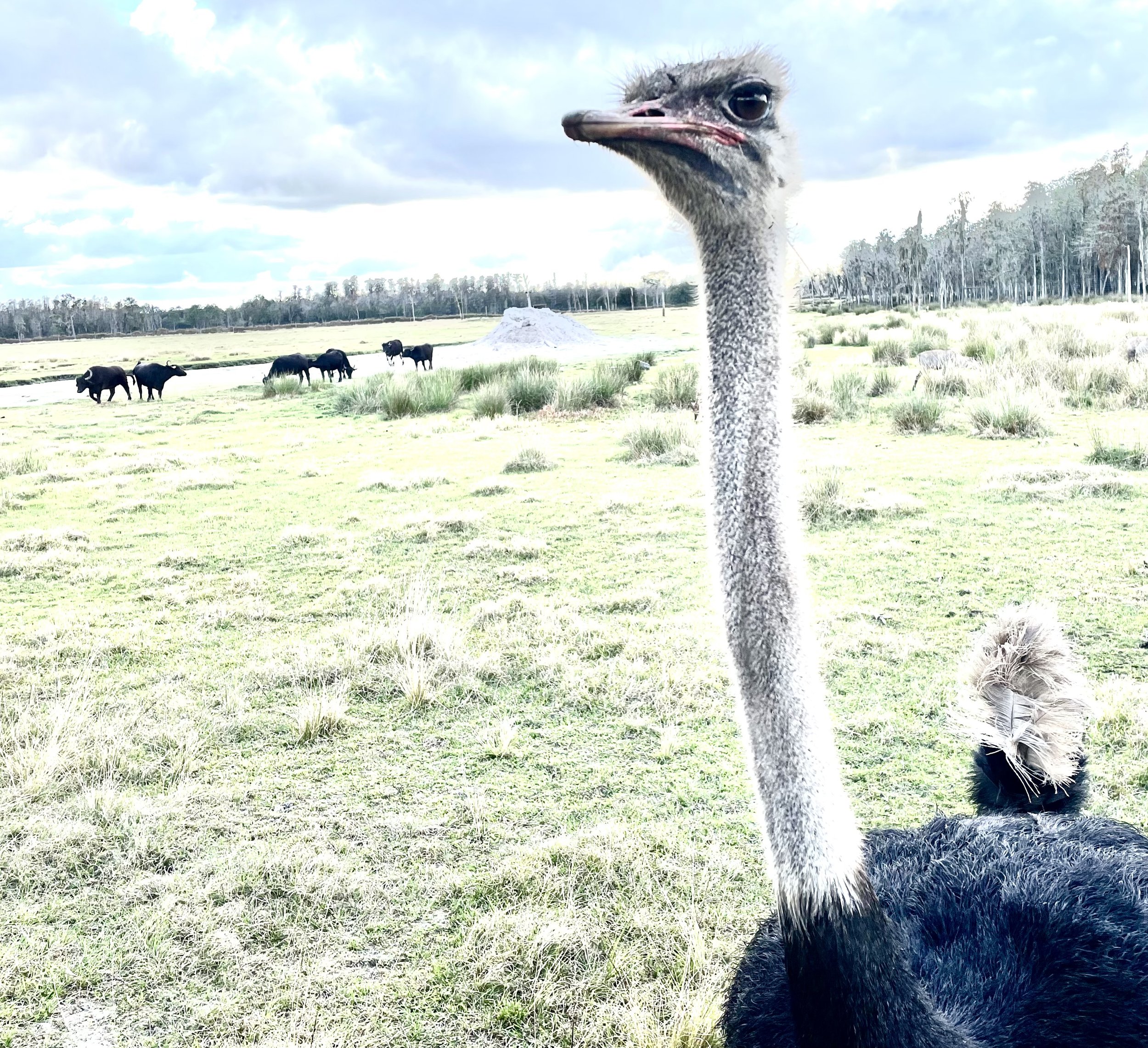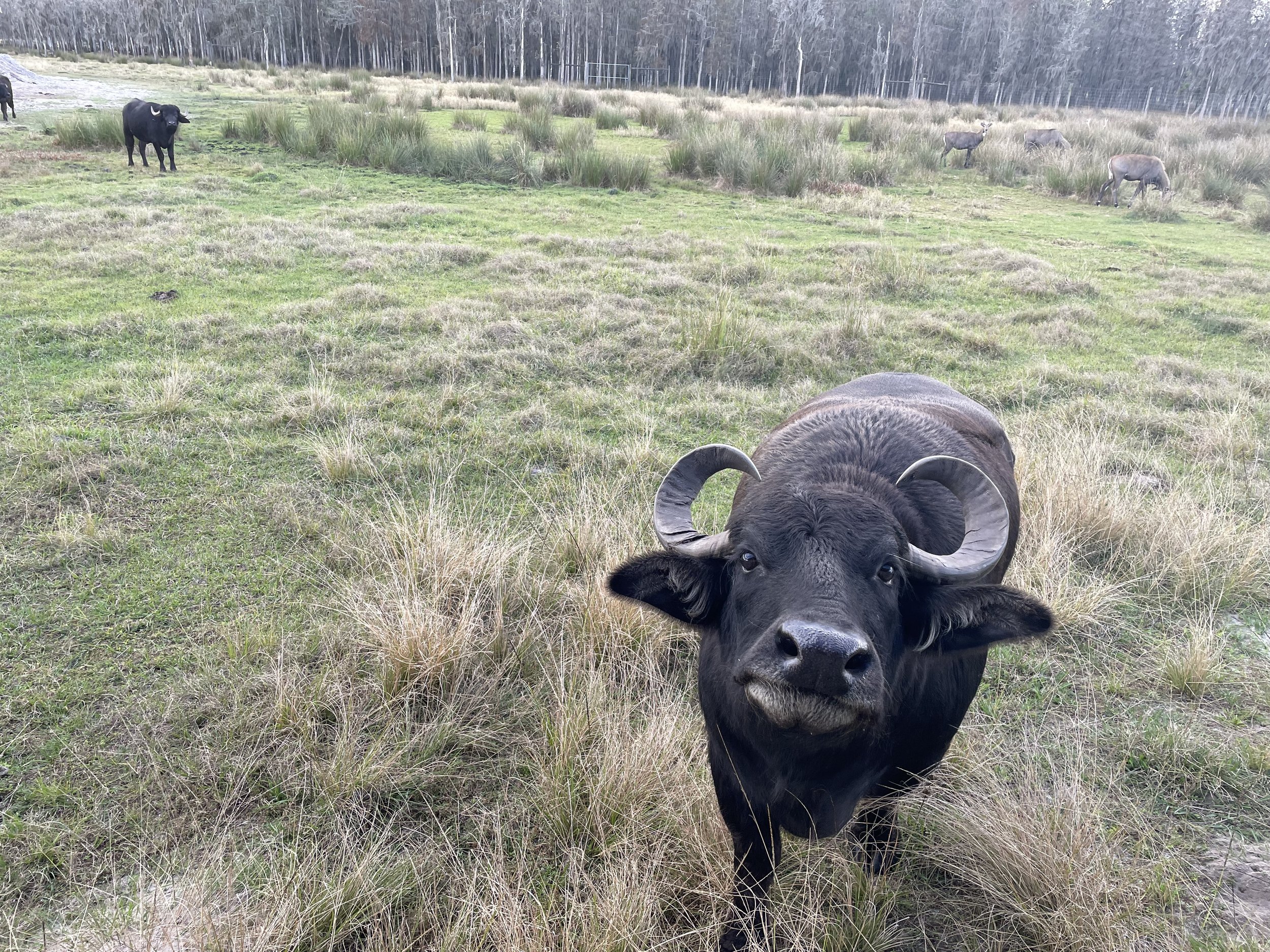Like new experiences? Go glamping at Safari Wilderness.
Base camp. These nine tents are on wooden platforms so they’ll stay dry. They’re also mobile so they can be moved as necessary, then packed away for summer.
I am crazy-excited to tell you about this adventure. You’ll spend the night on a 260-acre African-like savanna—in Central Florida—surrounded by, yet safely protected from, exotic animals. Upgrade to the premium option and you’ll have ring-tailed lemurs on one side of you, cheetahs on another, and a bunch of caged-in warthogs a few steps away.
This is that fabulous. It is honestly one of the very coolest activities in the Orlando-Tampa area.
I was lucky enough to try it out this week, as a guest, and here’s how it played out: Two of us spent the night entirely alone on that 260-acre savanna. Our only company was 500 animals, representing 40 species. Just us. And those beautiful creatures. (With lots of fences.) Just the idea of having this opportunity had me giddy like a little kid. The service and facilities were terrific, making the experience a solid A+. I’m not big on the word “unique,” but in this case it may be accurate. What a way to spend a day.
An axis deer buck
Most glamping guests will have human company—glampers in other tents. That’ll be just as good. It’ll still add up to only a few humans against all that natural space and all of those two- and four-legged wonders.
The honeymoon suite
Glamping at Safari Wilderness — The Unusual Setting
Glamping is a portmanteau (mushed together) word referring to glamorous camping. Even a bed, fan and hammock might not ordinarily nudge me from the comfort of a luxury hotel. But at this venue, your pampering-for-camping sleeping accommodations are set within an African-like savana area filled with exotic animals. You read that right. Safari Wilderness’s full-time residents are African and Asian animals such as capybara, wildebeest and banteng cows.
This chandelier was custom-made from “the shed”—antlers that fell off—of fallow, axis and barasinga beer.
The animals are here all the time. The Grant’s zebras and axis deer, the Barbary sheep and ring-tailed lemurs—they live on the grounds and are the focus of most activities.
These Barbary sheep and waterbuck are some of the friendly fellows you’ll encounter during your sunrise or sunset safari.
What else might you see? “We have a herd of the sitatunga, the antelope with elongated hooves found in the wettest habitats in Africa,” says Lex Salisbury, co-founder and co-owner, who has led safaris in Africa 30 times over 30 years. “Other herds of wetland antelope include the waterbuck and the red lechwe.”
Llama
That’s not all, folks. “We have the only red forest Buffalos on exhibit in the country,” Lex says. They’re in a 30-acre forest habitat. “Warthogs, wildebeests, Barbary sheep, giant spur-thighed tortoises, flocks of ostrich … as well as a large herd of Watusi or Ankole cattle with thickest horns in the world. The thick horns are heat radiators. As the blood leaves the thermal mass of the body and enters the cooler horn, the blood cools and renters the body, functioning like a radiator in your car.”
That’s a whole lot to see. Lex has more to say about the collection, and his comments give you an idea of the kind of enthusiastic, in-depth insight guides share during safaris. ”Asian species include herds of fallow, axis and the endangered Barasinga deer. Coming soon are blackbuck antelope. Blackbuck are cheetah food in India and are the second-fastest antelope on earth. They are the product of natural selection, the slower ones being eaten by cheetah, leaving one of the fastest hoofed mammals on earth. Also coming is a large herd of the semi-aquatic Pere David’s Deer, a species extinct in the wild in its native China. The endangered banteng cattle and a herd of Asian water Buffalo round out the Asian species.”
Safari Wildness offers traditional safaris in an open-sided jeep-like vehicle. You’ll be led by an ultra-knowledgeable and personable guide, and given food to feed the animal. You can opt for a shorter yet less-expensive safari in your own car where you stay in your vehicle and follow the guide, who’s on an ATV; or, upgrade to a safari where you drive the all-terrain vehicle yourself, paddle a kayak or ride atop a camel.
But back to the glamping: Now you can spend an entire night on the Safari Wildnerness grounds, sleeping in a furnished tent and receiving many comforts generally unique to hotels.
2. Glamping at Safari Wilderness — The Main Glamping Tents
When the Safari Wilderness glamping tents open on December 15, 2021, you’ll have two choices. You can choose one of the nine tents that are located in the Base Camp, near the main building. Each tent is situated atop a wooden platform. It has a bed, battery-operated lamps and fans, netted windows that can be kept open or zipped shut, and a rack for hanging items. Each has a king-size bed. Cots or tepees might be available for a modest fee if you want to add an extra person or two.
The area has two fire pits, so you can gather around and gab after dark. You’ll be right near the Welcome Barn, a bright two-story air-conditioned building. That has comfy seating for curling up with a book, modern showers and bathrooms, and a tiki hut that will provide hot coffee and continental breakfast every morning. You can even play ping pong and a corn hole game. The views of the veldt from the second floor are wonderful. That top floor also has a bunch of taxidermied animals, including a lion. Take a peek from afar.
In the future, a food truck might visit the grounds nightly to sell dinner foods. For now, you can bring your own and eat at an indoor or outdoor picnic table, or head over to Lakeland for a meal. Just be sure to return by curfew.
3. Glamping at Safari Wilderness — The Premier Tent
While the standard glamping tents rent for $400 per night, you can have a yet more incredible experience for yet more of an investment — $1,500. For that price, you take a camel ride out to The Outlook aka The Honeymoon Suite. You’ll be on your own, and you will love it.
On my way to The Outlook for my glamping experience at Safari Wilderness
The tent is the same. Here, though, you’ll have your own bathroom and your own shower—yes, with hot water. Both are located downstairs.
Upstairs in this free-standing building, you’ll have not just the tent with the bed all battery-lamps, but also a private pavilion. A mini-fridge and counter are your source for continental breakfast, snacks and coffee from a Keurig machine. Directors’ chairs overlook one area of the savanna. A hammock provides another. Fun fact: The pavilion was built to be a giraffe deck. When that didn’t work out, the structure was repurposed into a glamping facility.
And, those animals. A ring-tailed lemur pen fences in several of those adorable monkey-like creatures in an area that will be right behind your head when you sleep. Two cheetahs will be having their Big Cat fun on the far side of the pavilion. Cheetahs are the fastest land animals on earth, and you’ll be able to watch a pair of them live their lives while you sip your coffee. And those warthogs — think Pumbaa from The Lion King — will dash around, slumber and slurp right across the lawn.
After dark, that lawn will have two chairs set around a fire pit. Pack a few beers or a bottle of wine. Then just sit, sip, listen and enjoy one another’s company.
The fire pit at The Overlook
4. Glamping at Safari Wildness — The Perks
You know those safaris I told you about above? When you go glamping at Safari Wilderness, you get what I think is an even better safari: sundown or sun-up, your choice. Animals tend to be perkier at the start and end of the day, plus the sky is likely to be more interesting. Bring your camera and your listening ears, because you’ll be snapping photos like crazy and learning a whole bunch about these African and Asian species—and you’ll care, because the tour guides are so passionate that they make the info fascinating.
5. Glamping at Safari Wilderness — The Magic
Well here I have to ‘fess up. Due to lousy timing, I had to dash out of Safari Wilderness at 6:30 a.m. to make it to a prior commitment. The animals were mostly quiet when I left. I woke up at 5 a.m. and got to hear one animal at a time, then another, begin what I was hoping would grow into a symphony of savanna sounds. I left before that happened. What I missed, I’m told, was the colorful sunrise, of course, plus seeing those lemurs fed their breakfast, and the warthogs rustling awake, then the honks, bleats and calls of all those other few hundred savanna inhabitants. I did see some of the wood storks and sandhill cranes that come around from the surrounding Green Swamp area, and might have spotted herons and ibis without recognizing them.
Warthogs
The visit was still a win. Glamping at Safari Wilderness is a one-of-a-kind experience in the Orlando-Tampa region, and, as far as I know, anywhere nearby.
Let me add in a bit about the service here. I found every employee especially hospitable, yet they knew I was their boss’ guest so they would have been extra helpful no matter what. The goal, though, is to give an utra-warm welcome to every glamper, and of course every safari-goer too. As Lex explains it, “I think the big thing that exists in Africa that we're really trying to replicate here is to have outstanding hospitality, which is different from great service. You feel like you're at home [at an African safari venue]. The people are genuinely some of the nicest, most interesting, most hospitable people you'll meet. That combined with the primal nature of an evening fire—something that all human culture shares—encourages relaxation and discussion about in-the-moment things you just experienced; that part of a safari really impactful.” He adds that “sundowner drinks,” usually part of the glamping experience at Safari Wilderness, together with “the taste of food and drink served outdoors” magnify the significance of the experience. In sum, “At the end of a safari, you feel more one with the world, and you feel somehow slightly wiser.”
If you’re game to check out these game animals and maybe spend a night or three sleeping near them, click here and make a reservation online. The glamping will be available through spring, then closed in summer when it’s too hot and muggy. All sales are final, so triple-check your calendar beforehand. Then enjoy. And share pics, please. Living among exotic animals, even for one night — it just never grows old.
Grant’s zebras will be your neighbors the night you go glamping at Safari Wilderness, which has one of the largest on-display herds in the United States.
